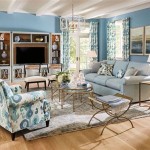How to Decorate With a Green Sofa: A Comprehensive Guide
A green sofa can serve as a striking focal point in any living space, bringing a touch of nature, tranquility, and sophistication. However, successfully integrating a green sofa into an existing décor scheme requires careful consideration of color palettes, textures, and overall design principles. This article provides a comprehensive guide to decorating with a green sofa, exploring various styles, complementary colors, and practical tips to create a harmonious and visually appealing environment.
Choosing the Right Shade of Green
The first and perhaps most crucial step in decorating with a green sofa is selecting the appropriate shade. Green encompasses a wide spectrum of hues, each with its own unique character and impact. Darker greens, such as emerald or forest green, evoke a sense of luxury and depth, making them well-suited for formal living rooms or studies. Lighter greens, like sage or mint, possess a more airy and refreshing quality, ideal for creating a calm and inviting atmosphere in casual spaces. Consider the existing color scheme of the room and the desired mood when making this selection.
When examining specific shades, it’s beneficial to obtain fabric swatches and observe them in the actual lighting conditions of the room. Artificial lighting can significantly alter the appearance of colors, so it’s essential to assess how the green sofa will look both during the day and at night. Additionally, consider the undertones of the green. Some greens have warm, yellow undertones, while others lean towards cooler, blue undertones. Matching the undertones to the existing décor will create a cohesive and balanced look.
Moreover, think about the overall style of the room. A vibrant, Kelly green might be perfect for a modern, eclectic setting, while a muted olive green could be more fitting for a rustic or bohemian-inspired space. The shade of green chosen should complement the architectural style and the existing furniture pieces in the room.
Complementary Colors and Palette Considerations
Once the shade of green is selected, the next step involves determining the complementary colors that will be incorporated into the room. Color theory plays a significant role in creating a visually appealing and harmonious space. Utilizing complementary colors, analogous colors, or a monochromatic approach can all be effective strategies, depending on the desired aesthetic.
For a high-contrast and dynamic look, consider using complementary colors. The complement of green is red, and incorporating shades of red, such as terracotta, burgundy, or coral, can create a striking visual impact. However, it's important to use these colors sparingly and thoughtfully to avoid overwhelming the space. Accents like throw pillows, artwork, or rugs in complementary colors can add pops of vibrancy without dominating the room.
Analogous colors, which are colors that are adjacent to each other on the color wheel, offer a more subtle and harmonious approach. For a green sofa, analogous colors might include shades of blue and yellow. Incorporating these colors through wall paint, textiles, or accessories can create a calming and cohesive environment. For instance, a green sofa paired with blue cushions and yellow lamps can evoke a sense of serenity and balance.
A monochromatic color scheme, which involves using different shades and tints of the same color, can also be an effective strategy. Pairing a green sofa with various shades of green in the surrounding décor can create a sophisticated and cohesive look. Adding texture and pattern prevents the room from feeling monotonous. For example, incorporating a green velvet sofa with lighter green walls and darker green accents in the form of throw blankets and curtains creates a rich and layered effect.
Textures and Materials
In addition to color, texture plays a crucial role in the overall aesthetic of a room. Incorporating a variety of textures can add depth, dimension, and visual interest to the space. When decorating with a green sofa, consider the textures of the surrounding furniture, fabrics, and accessories.
If the green sofa has a smooth texture, such as velvet or leather, consider pairing it with contrasting textures to create visual interest. Incorporating rough-hewn wooden furniture, woven baskets, or chunky knit throws can add a touch of rustic charm and balance the sleekness of the sofa. Conversely, if the green sofa has a more textured surface, such as linen or boucle, consider pairing it with smoother materials to create a sense of contrast.
The choice of materials can also impact the overall style of the room. Natural materials, such as wood, stone, and cotton, tend to create a more organic and relaxed atmosphere. Incorporating these materials through furniture, flooring, and textiles can complement the natural feel of the green sofa. Conversely, incorporating metallic accents, such as brass or copper, can add a touch of glamour and sophistication to the space.
Consider the material of the sofa itself. Velvet sofas exude luxury and are well-suited for formal living rooms. Linen sofas offer a more casual and relaxed feel, perfect for informal spaces. Leather sofas are durable and stylish, fitting well in both modern and traditional settings. The material of the sofa should complement the overall style and function of the room.
Adding Accessories and Accents
Accessories and accents are the finishing touches that can tie the entire room together. When decorating with a green sofa, carefully selected accessories can enhance the overall aesthetic and create a cohesive look. Consider the style, color, and texture of the accessories to ensure that they complement the sofa and the surrounding décor.
Throw pillows are a simple and effective way to add color, pattern, and texture to a green sofa. Experiment with different sizes, shapes, and fabrics to create a visually appealing arrangement. Consider incorporating throw pillows in complementary colors, such as red or pink, to create a bold statement. Alternatively, opt for throw pillows in analogous colors, such as blue or yellow, for a more subtle and harmonious look.
Rugs can also play a significant role in defining the space and anchoring the green sofa. A rug with a complementary color or pattern can add visual interest and tie the entire room together. Consider the size and shape of the rug to ensure that it is proportionate to the sofa and the surrounding furniture. A larger rug can help to define the seating area, while a smaller rug can add a pop of color and texture.
Artwork and wall décor can also enhance the overall aesthetic of the room. Choose artwork that complements the color scheme and style of the green sofa. Consider incorporating artwork with natural elements, such as landscapes or botanical prints, to reinforce the connection to nature. Alternatively, opt for abstract art or geometric patterns to create a more modern and contemporary look.
Plants are a natural complement to a green sofa, further enhancing the connection to nature and adding a touch of freshness to the space. Incorporate potted plants, hanging plants, or floral arrangements to create a vibrant and inviting atmosphere. Choose plants that thrive in the lighting conditions of the room and that complement the overall style of the décor.
Lighting plays a crucial role in setting the mood and highlighting the green sofa. Incorporate a variety of lighting sources, such as overhead lighting, table lamps, and floor lamps, to create a warm and inviting atmosphere. Consider using lamps with warm-toned bulbs to enhance the richness of the green sofa. Dimmers can also be used to adjust the lighting levels and create different moods throughout the day.
Balancing Warm and Cool Tones
A key aspect of successful interior design involves balancing warm and cool tones. Green, depending on its undertone, can lean towards either warm or cool. Understanding and strategically balancing these temperatures within a room containing a green sofa is paramount achieving visual harmony.
If the green sofa is a cooler shade (e.g., teal green, emerald green), warmer elements may be required to prevent the space from feeling sterile or unwelcoming. Consider pairing it with warm-toned woods, such as cherry or walnut, and accents of gold or brass. Textiles in shades of cream, beige, or terracotta can also add warmth and balance to the cool green.
Conversely, if the green sofa is a warmer shade (e.g., olive green, chartreuse), cooler elements may be needed to prevent the room from feeling too heavy or earthy. Pairing it with cool-toned woods, such as light oak or maple, and accents of silver or chrome can help to balance the warmth. Textiles in shades of gray, blue, or white can also add coolness and create a more refreshing atmosphere.
The balance of warm and cool tones should extend throughout the entire room, from the wall paint and flooring to the furniture and accessories. A careful consideration of these temperatures will result in a cohesive and visually balanced space.

Green Living Room 21 Inspiring Ideas

Green Sofa Living Room Ideas Sofas Swyft

60 Green Interior Design Ideas Room Designs Living Decor Sofa

How To Style A Green Sofa Coveteur Inside Closets Fashion Beauty Health And Travel

Green Living Room Design For All Home Décor Styles Beautiful Homes

Trendy Green Sofa Ideas Bold Color Accents For Your Home Decor

21 Quirky Bohemian Living Room Decor Ideas House Interior Designs Home Design

Boho Chic Living Room Green Sofa Aztec Rug Indoor Plant Ideas

Green Living Room 21 Inspiring Ideas

Pin On Salones
Related Posts







